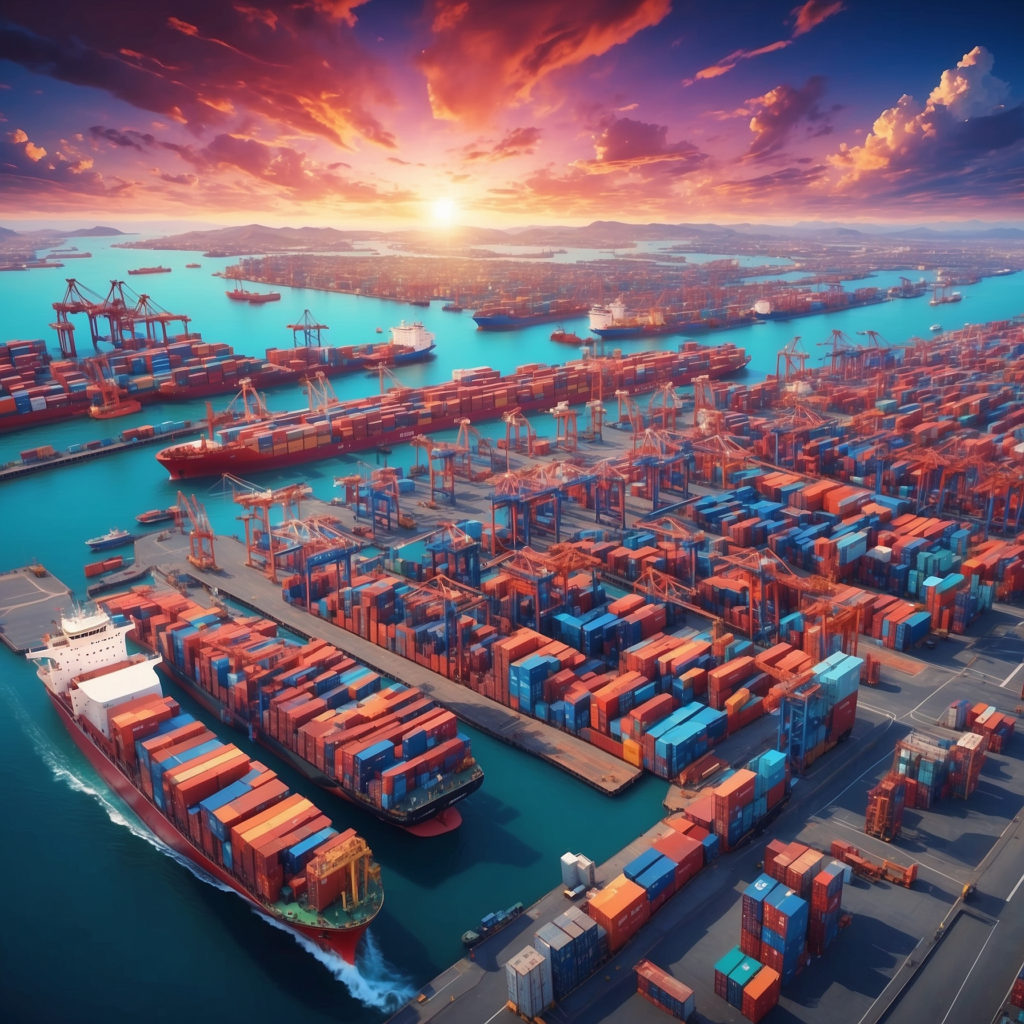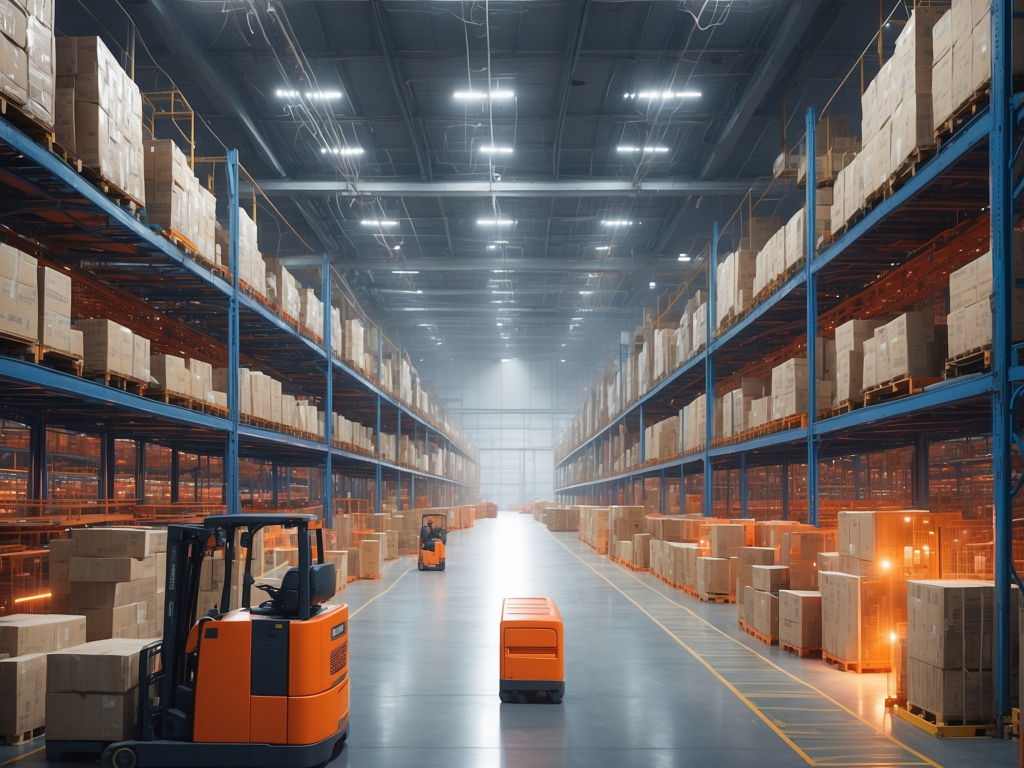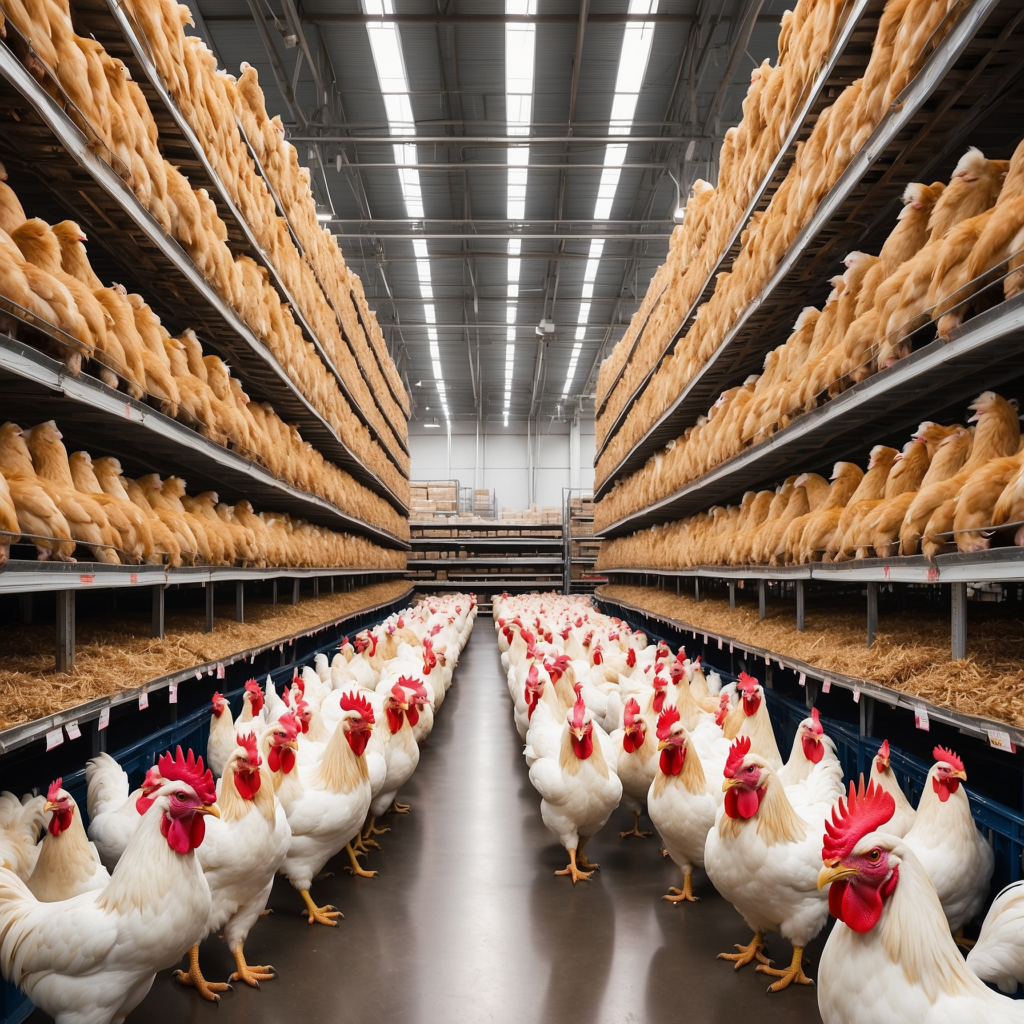So, you’re a small business owner trying to figure out how to keep your supply chain running smoothly while dealing with ethical dilemmas, sustainability concerns, and the occasional shipping disaster.
Sound familiar? Well, guess what—you’re not alone! Even retail giants like Costco have faced their fair share of supply chain chaos, from environmental backlash to labor issues. But here’s the kicker: Costco’s big-scale problems are goldmines of lessons for small businesses like yours.
Why should you care? Because learning from Costco’s mistakes and strategies could save you a lot of time, headaches, and money.

Whether it’s managing the ethical sourcing of materials or streamlining logistics with a bit of tech magic, Costco’s approach offers real-world insights that you can apply to your own business—without needing a billion-dollar budget.
Stick around, and we’ll break down exactly how Costco tackled some major challenges and what you, as a small business owner, can take away from it all.
Costco’s supply chain isn’t exactly the poster child for environmental or social responsibility. Between the mountains of single-use plastics and the impact of their operations on the planet, there’s a lot to unpack here.
Think of it like Costco’s bulk items—you get a lot more than you bargained for, and not in a good way.
Labor Practices
Costco’s supply chain has a bit of a geography problem—it tends to stretch into regions where labor laws are, well, pretty chill. This raises all kinds of red flags when it comes to workers’ rights and safety.
Sure, Costco has made some promises to improve, but they haven’t exactly been winning gold stars in the consistency department.
There have even been some yikes moments, like when KnowTheChain found out about allegations of forced labor lurking in the supply chain. It’s a bit like finding out your favorite product has a sketchy origin story—definitely not what you want in your cart. Costco clearly needs to up its game on ethical sourcing and fair labor practices.
Environmental Impact of Operations
Costco’s environmental impact is a bit like the iceberg that sank the Titanic—what you see (like the packaging) is just the tip. The real kicker? Scope 3 emissions, which come from suppliers, make up the vast majority of Costco’s total carbon footprint.
That’s like blaming the wrapper for the chocolate bar’s calories—it’s a much bigger problem than just what’s on the surface.
Even though Costco has a few eco-friendly initiatives in place, critics say they could do a whole lot better. They’re big on food donations (which is great), but recycling and waste reduction? Not so much. It’s like cleaning your room by shoving everything into the closet—not exactly solving the problem.
This approach raises ethical concerns about managing food waste and whether it aligns with broader sustainability goals.
Transparency and Accountability
Costco has promised to spill the beans on its plastic usage, but historically, it’s been about as open as a clam in a closed shell when it comes to sharing details about its environmental impact.
The company has faced some heat for not being upfront about its plastic footprint and that pesky Scope 3 emissions that account for over 98% of its carbon footprint.
Stakeholders are raising their voices for more accountability because nobody likes playing hide-and-seek with important info.
In short, Costco has some work to do if it wants to keep its reputation shiny and bright while actually being a good corporate citizen!
Costco is on a mission to make all those Kirkland Signature goodies come in packaging that’s either 100% recyclable, reusable, or compostable by 2025. That’s right—no more plastic that’ll haunt us for centuries!
This move is like Costco saying, “Hey, we hear you, planet lovers!” as they respond to the rising tide of eco-conscious shoppers.
They’re on a mission to ditch plastic in favor of biodegradable options, cut down on excess packaging (because who really needs three layers of plastic to wrap a single apple?), and even educate us on how to recycle properly—because let’s be real, most of us are still guessing.
Costco has teamed up with Green Century Capital Management to be a bit more open about how much plastic they’re tossing around.
They’ve cooked up a five-year action plan that’ll cut down on single-use plastics for the Kirkland Signature brand. Hopefully, it’s not like those projects you start with good intentions but never finish.
But it’s not just about packaging! Costco’s sustainability playbook includes getting their suppliers on board with more eco-friendly practices too. They’ve come up with these “Six Rights of Sustainable Packaging,” which basically boils down to less waste, more recycled stuff, and responsibly sourced materials. It’s Costco’s way of saying, “Hey suppliers, time to clean up your act, too!”
These six rights emphasize:
While initiatives like the sustainable packaging for Kirkland Signature products are a step forward, achieving these goals across its entire product line and supply chain will require long-term investment and innovation.
Costco’s response to these challenges will shape its ability to retain environmentally conscious customers and address ethical concerns in a competitive retail landscape.
Costco’s had a bit of a shipping nightmare lately. With container shortages and port congestion—especially in California—their deliveries have been slower than trying to check out at Costco on a Saturday afternoon.
These logistical traffic jams have jacked up costs, too, since they’ve had to spring for more expensive, expedited shipping. It’s like paying for express delivery and still getting it three days late.
To make things even more fun, rising labor costs in logistics and transportation are hitting Costco where it hurts—the budget. With freight costs going up and transportation demand soaring, their supply chain is feeling the squeeze. It’s kind of like trying to stretch a single Costco-sized jar of peanut butter for a year. Spoiler alert: it doesn’t work.
And then there’s the staffing issue. Between warehouse and transportation worker shortages, Costco’s order fulfillment and inventory management have taken a hit.
It’s hard to keep things running smoothly when you don’t have enough hands on deck. Plus, with everyone from tech companies to fast-food joints fighting for workers, Costco’s left competing for staff like it’s Black Friday.
Investment in AI and Technology
Costco’s been getting techy lately, rolling out a fancy new AI-powered inventory management system to smooth out its supply chain wrinkles. Think of it like giving their operations a robot assistant that’s way better at predicting what you’ll want to buy than your overconfident shopping list.
This AI uses some smart machine learning tricks to make inventory decisions that keep things running efficiently and customers happy—because no one wants to find out their favorite bulk snack is out of stock.

The real magic of Costco’s AI system is in how it predicts demand. It looks at everything from past sales to holiday shopping frenzies and even local weather forecasts. (Yes, apparently a rainy day means you’ll need more soup in bulk.)
By knowing what people will want before they even know it themselves, Costco keeps the shelves stocked with the right stuff and avoids filling the warehouse with products that just gather dust.
So, when it’s the holiday season or time for one of Costco’s big promotions, the AI already knows what’s going to fly off the shelves. It makes sure the warehouse is restocked just in time to keep customers from facing empty aisles and Costco from drowning in overstock.
Plus, the system tracks inventory in real-time, so no more guessing if that giant pack of muffins is available. Costco’s AI has eyes on everything, all the time, across all their stores and warehouses. It instantly flags when something’s running low, so they can restock before things get chaotic.
And because this is all automated, the days of employees running around doing manual inventory checks are pretty much over. It’s like Costco turned the supply chain into a well-oiled machine, literally.
Since turning on the AI brainpower, Costco’s cut inventory holding costs by 15% and bumped up product availability by 10%. So, not only are they keeping costs down, but they’re also making sure you can always get what you came for—whether it’s those jumbo muffins or, you know, their recent gold and platinum bars.
The innovation gives Costco a competitive edge: You can learn more about the company’s model here: Costco Competitive Advantages and Marketing Strategy.—the article provides a comprehensive overview of Costco’s business model and competitive advantages and highlights key aspects such as their low-cost pricing strategy, membership-based model, and the importance of the Kirkland Signature private brand.
Implementing Vertical Integration
Costco’s got chickens now. Yep, they went all-in on poultry by setting up their very own chicken processing plant back in 2017. It’s all part of a clever vertical integration strategy—fancy talk for “we’ll just do it ourselves.”
By owning the whole chicken supply chain, Costco can dodge those annoying price hikes and keep your rotisserie chicken cheap (because let’s face it, that’s what we all come for).

Instead of just buying chickens, Costco is now in charge of everything from feeding the birds to processing them. It’s like they’re running a farm-to-cart operation, but in true Costco fashion—at scale.
This move helps them keep a tight grip on quality and avoid the wild price swings that come with fluctuating feed costs or supply chain chaos. Basically, they’ve decided not to leave their chicken destiny in anyone else’s hands.
By doing this, Costco can keep costs steady, which means more savings for customers (and probably more chicken in your cart). It’s just another way they’re keeping their reputation as the go-to spot for great deals—while making sure those famous chickens stay delicious and budget-friendly.
You can learn more about Vertical Integration here: Scaling Up with Vertical Integration: When It Works and When It Doesn’t for Small Businesses.—The article directly addresses the concept of vertical integration, a key strategy employed by Costco. By discussing the benefits and drawbacks, it provides a valuable context for understanding Costco’s supply chain model. It helps to clarify the rationale behind Costco’s direct purchasing from manufacturers and how this approach can contribute to cost savings and operational efficiency.
Partnership
Costco’s last-mile delivery game got a serious upgrade when they teamed up with Instacart, making same-day delivery a reality for everything from fresh groceries to bulk toilet paper.
It’s like they’ve given your shopping experience a turbo boost. Now you can get your Costco haul without leaving the couch—what a time to be alive.
This partnership is Costco’s secret weapon in the e-commerce race. By combining Instacart’s delivery wizardry with their own inventory systems, Costco’s become a pro at fulfilling online orders quickly and efficiently.
And the best part? Online sales jumped a whopping 30%, bringing in a whole new crowd of younger, convenience-loving shoppers who’d rather click than push a giant cart down the aisles.

Instacart didn’t just make delivery easier; they made Costco shopping even more satisfying. Customers can now scroll through Costco’s vast inventory and get their hands on it the same day, which is a dream for anyone who needs 40 rolls of toilet paper right now.
Plus, tech-savvy folks who live for speed and efficiency are eating this up—literally, when it comes to those famous Costco snacks.
Oh, and there’s more! Costco members even get discounted Instacart+ memberships, sweetening the deal and tempting them to use this service on the regular. It’s Costco’s way of saying, “We know you love our deals, so here’s another one!”
Overall, this partnership with Instacart shows Costco’s dedication to using tech to boost its supply chain and keep up with what today’s customers want—fast, convenient shopping without sacrificing bulk savings.
You can read more on how to improve operational efficiencies and last-mile delivery using Home Depot’s Approach here: Home Depot: From Supply Chain Chaos to Conquest – A Guide for Small Business Owners——It’s a case study of Home Depot’s supply chain transformation. It discusses their strategies for tackling labor shortages, optimizing warehouse operations, and improving last-mile delivery.
These days, everyone’s got their eco-warrior cap on, and they’re demanding that companies like Costco step up their game with more sustainable and ethically sourced products.
It’s like a big green wave crashing over the retail world, and Costco is trying to ride it without wiping out!
This shift means Costco has to take a long, hard look at how they source their stuff and what kind of packaging they’re using. But hold on—switching to sustainable options can be trickier than finding a parking spot at Costco on a Saturday.
Those eco-friendly alternatives can cost more and aren’t always hanging out on the shelves waiting to be picked up, which can throw a wrench in the supply chain.
Shifts in Shopping Habits Post-Pandemic
Then there’s the post-pandemic shopping shakeup. Suddenly, everyone was all about essential goods and online shopping like it was the hottest new trend. Costco saw a massive spike in demand for groceries and home supplies during the pandemic—like they were handing out gold bars instead of toilet paper!
Even though things have calmed down a bit, folks are still prioritizing those essentials. This has put some serious pressure on Costco’s supply chain because now they’ve got to juggle increased demand while figuring out how to fit all those everyday goods into their warehouses without causing a traffic jam.
Managing this shift has led to some supply chain bottlenecks, especially for fast-moving consumer goods (FMCGs). It’s like trying to stuff too many marshmallows in your mouth—eventually, something’s gotta give!
Health-conscious Consumer Preferences
People are getting super health-conscious these days, which means they’re clamoring for organic and healthier food options.
This has put Costco in a bit of a pickle because sourcing organic products is no walk in the park—they usually come with shorter shelf lives and stricter production standards.
So, managing all this fresh and perishable goodness requires some serious logistics skills. They need efficient cold storage, timely distribution, and speedy inventory turnover to keep everything fresh and tasty. It’s like trying to keep ice cream from melting at a summer barbecue—no easy feat!
Price Sensitivity
And let’s not forget about inflation. With prices rising, consumers are more price-sensitive than ever. Everyone’s looking for a deal, and Costco’s bulk buys and Kirkland Signature products are flying off the shelves.
But, staying the go-to spot for bargains is a challenge when transportation and production costs keep climbing.
Trying to source cheaper materials or cut down on packaging to save a buck just makes Costco’s supply chain more complicated—because nothing says “fun” like balancing low prices with high costs.
Organic and Health-conscious Product Lines
With everyone jumping on the organic, clean-label bandwagon, Costco’s making sure they’re not left in the dust.
They’ve been seriously bulking up their organic game (pun intended) with a wide variety of healthier options under their Kirkland Signature label and other popular brands.
It’s like they’re saying, “Whole Foods, who?” as they climb their way to the top of the organic food mountain, even outpacing specialty stores in organic sales.
To keep the kale and quinoa flowing, Costco’s been getting creative. They’re not just waiting around for suppliers to get their act together; they’re going straight to the source.
Costco’s been helping farmers make the switch to organic with financial support and resources, essentially giving them the green light (literally) to grow organic.
One example? They’ve been loaning cash to growers like Andrew and Williamson Fresh Produce so they can snag the land and gear needed for organic farming.
Not only does this give Costco a steady stream of organic goods, but it also helps them keep prices in check by reducing their reliance on third-party suppliers who might jack up prices on a whim.
e-commerce Expansion
Costco has significantly ramped up its online presence to enhance customer convenience. The company has made substantial improvements to its e-commerce platform, allowing members to browse and order products from the comfort of their homes.
Key features of this enhanced platform include intuitive navigation, secure transactions, and options for same-day grocery delivery and curbside pickup.

Integrating these capabilities helps Costco to meet the growing consumer expectations for convenience while still maintaining its bulk-buying model, which is a hallmark of its traditional warehouse shopping experience.
By beefing up their online delivery options and setting up curbside pickup spots, Costco is basically telling the world, “We get it, you’re busy. Here, let us bring the bulk deals to you.”
And they’re doing all this without messing with their famous warehouse shopping vibe. It’s like Costco in your pocket!
On top of that, they’ve integrated advanced payment systems and fancy data analytics, so when you shop online, they’ve got your back with personalized recommendations. It’s like they know you can’t resist adding that extra case of sparkling water.

Email subscription is available ONLY TODAY (oh, okay, and tomorrow).
Surely, we respect your inbox! Unsubscription works every day.

 Just curious…
Just curious…We’d love to tailor your experience — which of these best describes you?